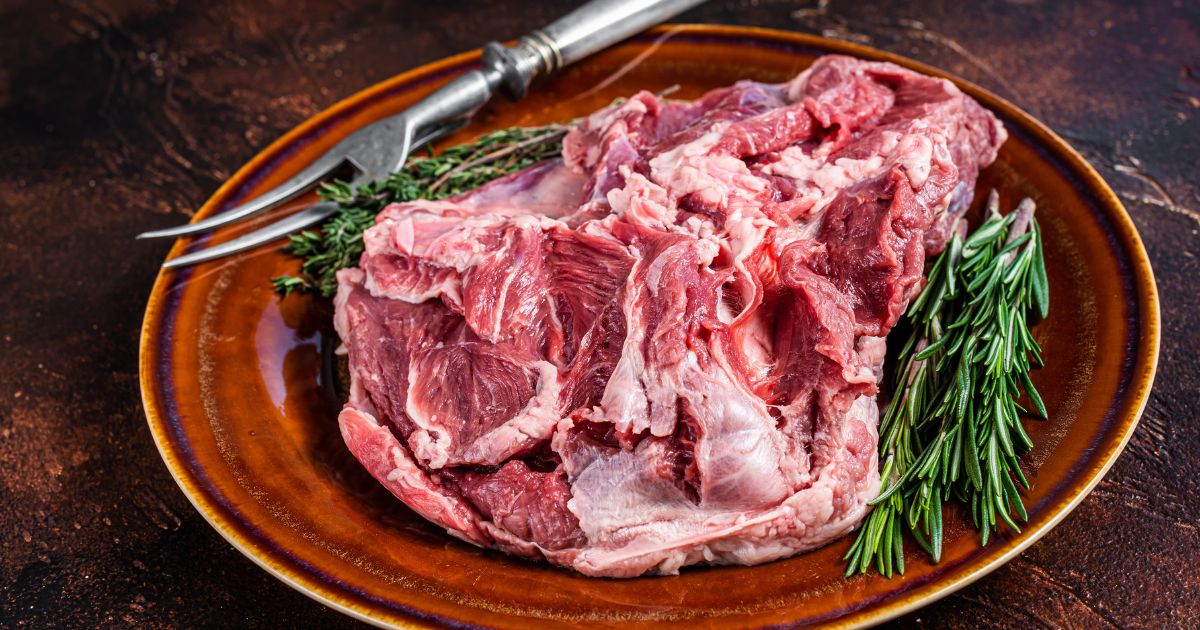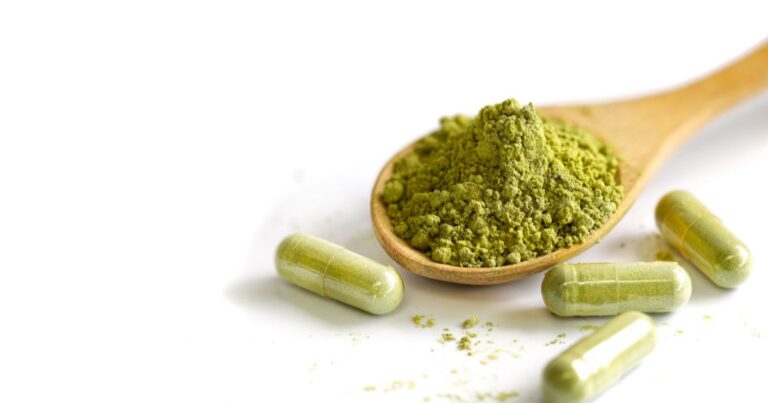Breaking Down How Goat Meat Taste: Unique and Savory Flavor
One ingredient that has consistently intrigued and delighted my palate is goat meat. Having incorporated this unique protein into my restaurant dishes and experimented with it in the comfort of my kitchen, I am eager to share my insights into the distinct taste of goat meat.

As someone who appreciates the richness of fresh Goat stew over some steamed rice, the juiciness of grilled goat chops, and the innovation of a goat burger crowned with guacamole, my culinary journey naturally led me to explore the intricate flavors when you cook goat meat.
Goat might be a lean meat, but it boasts a distinctive and robust flavor profile compared to red meat.
If you’re wondering what does goat taste like, imagine a crossroads between lamb and beef but with its unique character.
It shares the tenderness of lamb while possessing a heartier, more robust flavor reminiscent of leaner cuts of red meat or beef.
Goat meat taste is an adventure for the palate, offering a departure from the more commonplace meats like chicken or pork.
Table of Contents
Is Goat Meat Healthy For You?
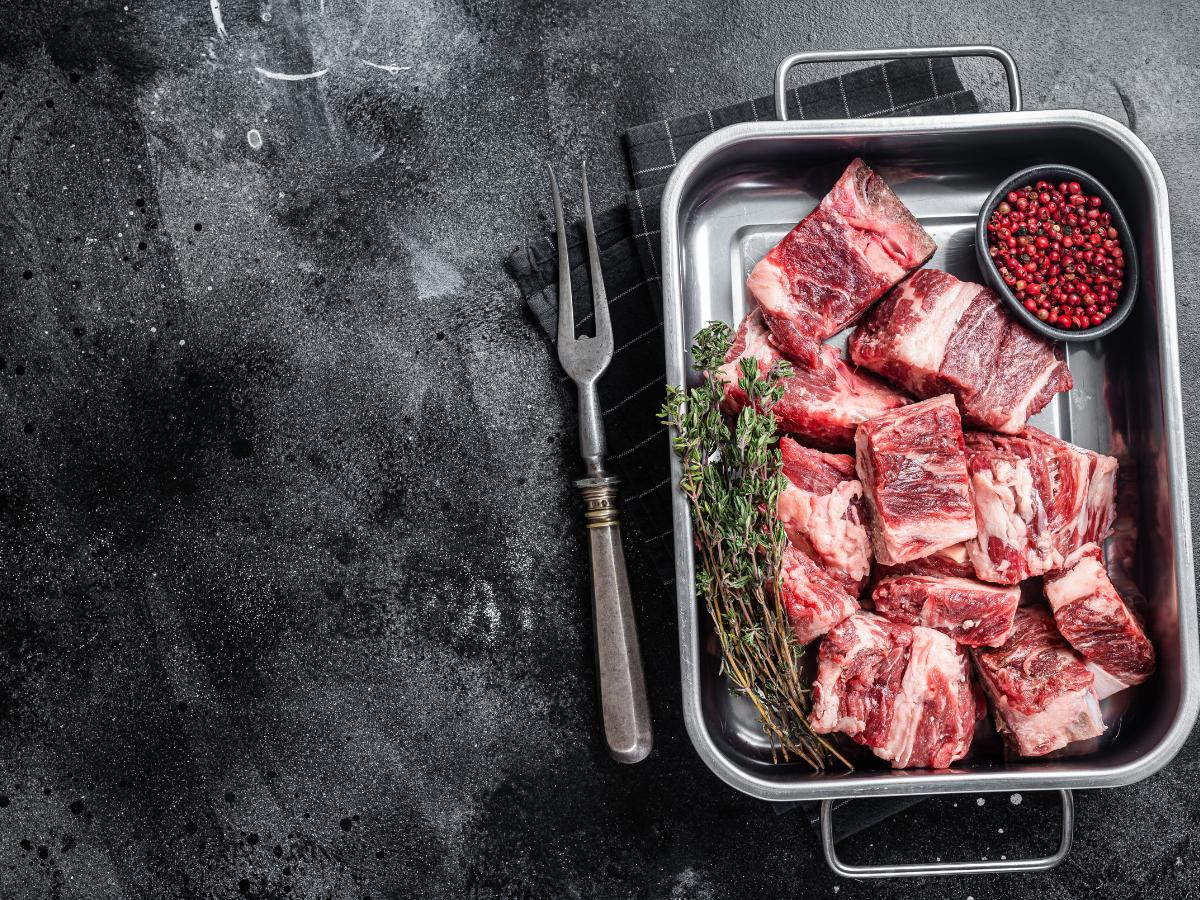
Beyond its taste, goat meat brings a health-conscious appeal to the table. Is Goat meat actually healthy for you?
Well, It’s leaner than beef and comparable to chicken in fat content.
Additionally, goat meat is a good source of protein, vitamins, and minerals. For those seeking a nutrient-dense alternative to more conventional meats, goat meat offers a flavorful option.
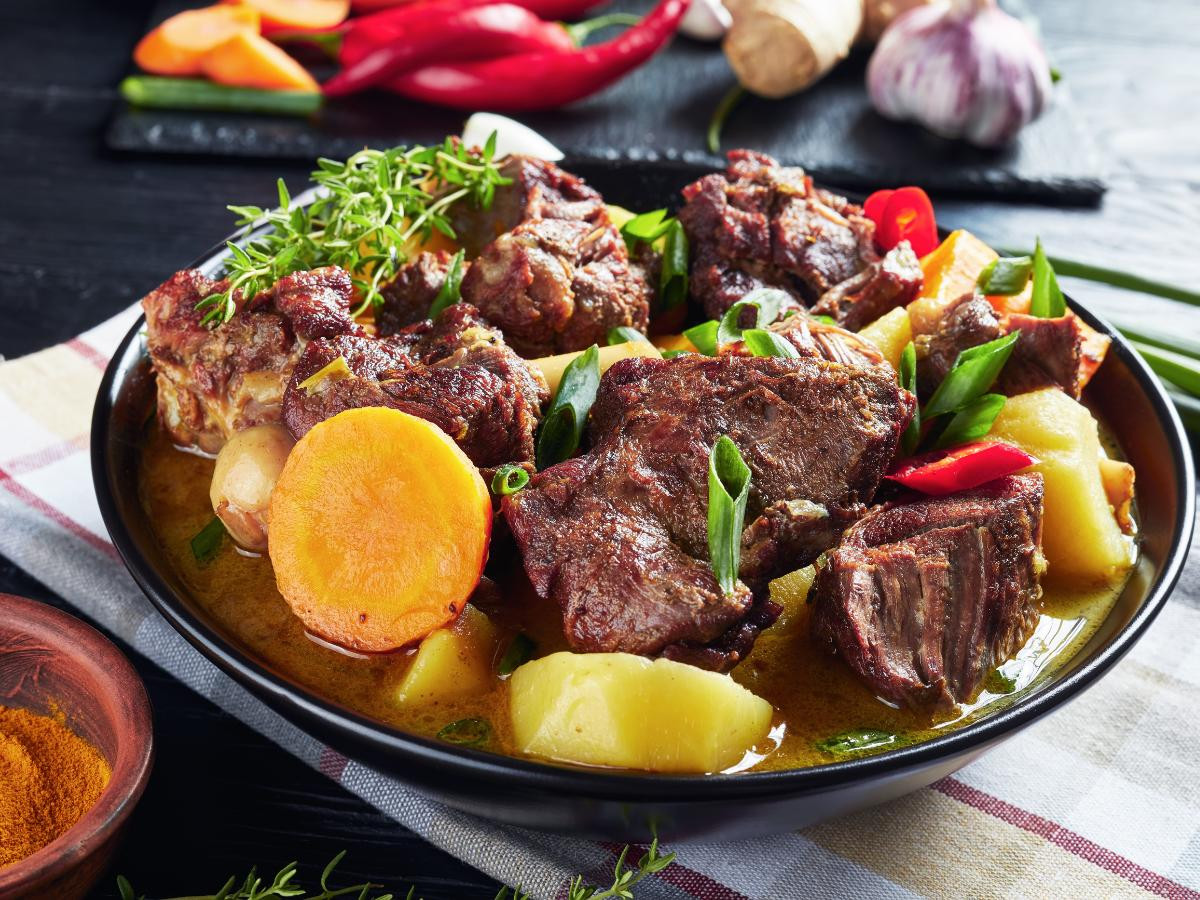
Goat meat is a healthy protein option when consumed as a balanced diet. Here are some reasons why goat meat dishes are often regarded as a nutritious choice:
Lean Protein: Goat meat is lean compared to other meats, particularly red meats like beef and pork. It is a good source of high-quality protein, essential for building and repairing tissues and supporting overall muscle health.
Lower in Fat: Goat meat generally contains less fat, especially saturated fat, than meats like beef and lamb. Lower saturated fat content can contribute to heart health when consumed in moderation.
Rich in Nutrients: Goat meat can be a great source of essential nutrients such as iron, zinc, phosphorus, and B vitamins, including vitamin B12. These nutrients play crucial roles in various bodily functions, including energy metabolism, immune system support, and blood health.
Lower Caloric Content: Because goat meat is leaner, it tends to be lower in calories compared to fattier cuts of meat. For those watching their calorie intake, lean meats can be beneficial.
Omega-3 Fatty Acids: Goat meat contains omega-3 fatty acids known for their heart-healthy properties. While the levels may not be as high as in fatty fish, incorporating a variety of omega-3 sources in the diet contributes to overall cardiovascular well-being.
Less Environmental Impact: Some people choose goat meat for its lower environmental impact than larger livestock such as cattle. Goats especially younger goats often require less land and resources to raise, making their production more sustainable in certain environments.
What Does Goat Meat Taste Like?
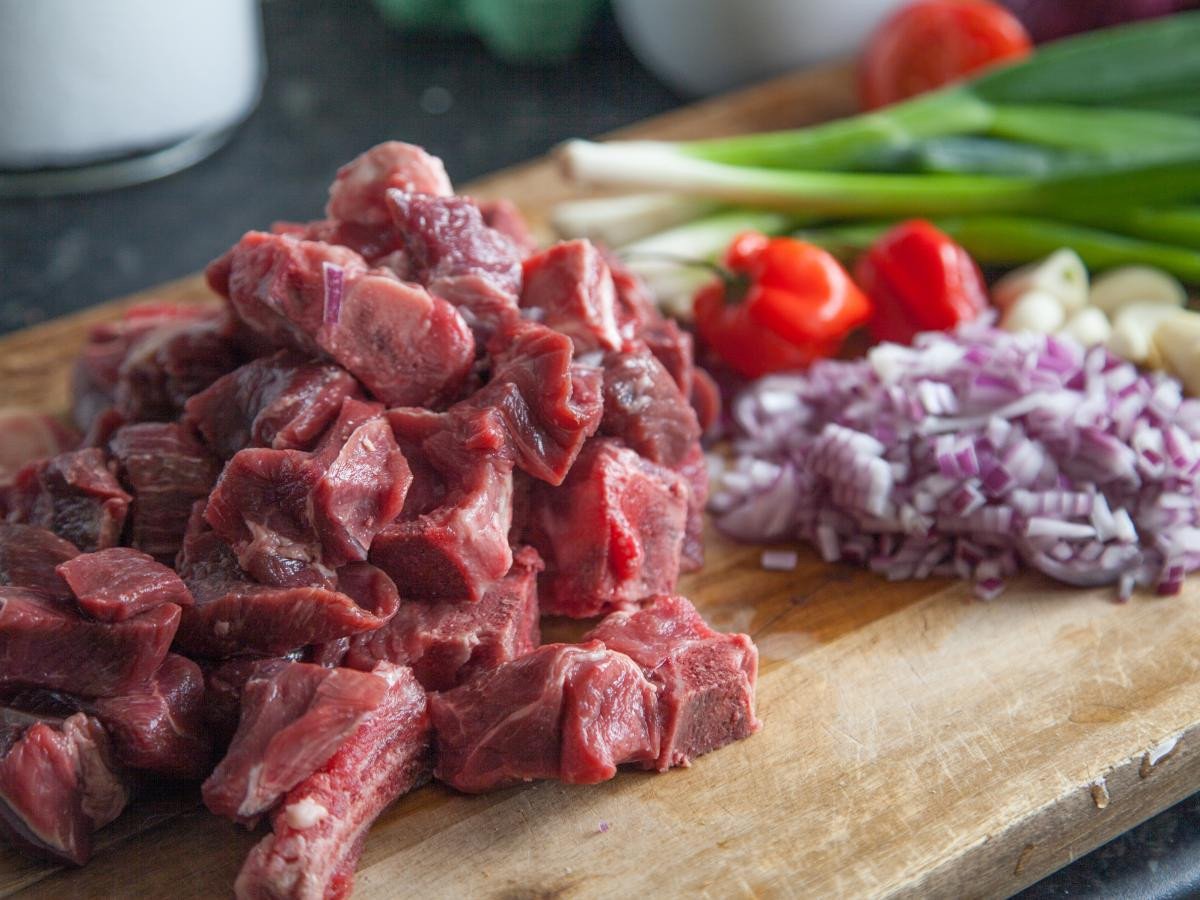
Distinctive Flavor Profile:
Goat meat possesses a flavor that is best described as a harmonious blend of bold, earthy, and slightly gamey notes. It’s a taste that stands apart from more common meats like beef, chicken, or lamb.
The uniqueness of goat meat lies in its ability to deliver a robust and hearty experience for the taste buds. Fresh Goat Meat taste good in my opinion.
When cooked slowly, maybe with a little curry powder or light seasonings to not overpower the flavorful meat, most goat meat and goat meat dishes can taste delicious and carry incredible health benefits.

Gamey and Earthy:
Goat meat is often characterized by a gamey taste reminiscent of wild game such as venison. This gamey quality adds an earthy and robust dimension to the meat, separating it from more commonly consumed meats like chicken or pork.
Rich and Hearty Lean Meat:
The flavor of goat meat is rich and hearty, with a depth that can be compared to leaner cuts of beef. It carries a certain boldness that, when prepared thoughtfully, contributes to a satisfying and substantial dining experience.
Distinctive Musky Undertones:
Some describe goat meat as having musky undertones, which add complexity to its flavor. These undertones can vary based on the goat’s age, diet, and how the meat is prepared.
Mild Sweetness:
Despite its robust nature, goat meat may also exhibit a subtle, mild sweetness. This sweetness can be more noticeable in younger goats and can contribute to a well-rounded flavor profile.
What Does Goat Meat Compare To?

If you’re seeking a comparison to more familiar meats, envision goat meat as a crossroads between lamb and beef.
Like lamb, goat meat exhibits tenderness but departs with a more pronounced and assertive flavor. The earthiness of goat meat distinguishes it from the milder lamb, and while it shares some qualities with lean beef, the gamey undertones offer an adventurous departure from the ordinary.
Lamb-Like Tenderness with a Bold Twist:
Regarding tenderness, goat meat aligns with the delicate texture found in lamb. However, it’s crucial to note that while goat meat shares this tenderness, it embarks on a bolder flavor journey.
The succulence reminiscent of lamb sets the stage, but goat meat detours into more assertive and robust taste territories.
Departure from Milder Lamb:
Imagine lamb’s mild, slightly sweet notes, and then introduce a robust earthiness. Goat meat departs from the milder profile of lamb, offering a flavor spectrum that leans towards a more complex and intense experience.
The earthy undertones in goat meat add a layer of depth that transforms the taste into a distinctive and memorable encounter.
Lean Beef with a Gamey Edge:
Comparing goat meat to lean beef reveals similarities in texture, but the flavor journey takes a unique turn. While both may share a lean profile, goat meat introduces gamey undertones that provide a departure from the usual beefy experience.
It’s as if you took the heartiness of lean beef and infused it with the adventurous essence found in wild game.
Adventurous Departure from the Ordinary:
The gamey undertones of goat meat offer an adventurous departure from the more common meats. Think of it as stepping off the well-trodden path of familiar flavors and onto a culinary trail that leads to a captivating blend of earthiness and richness.
This departure from the ordinary makes goat meat a tantalizing choice for those seeking a unique and memorable dining experience.
A Symphony of Tastes:
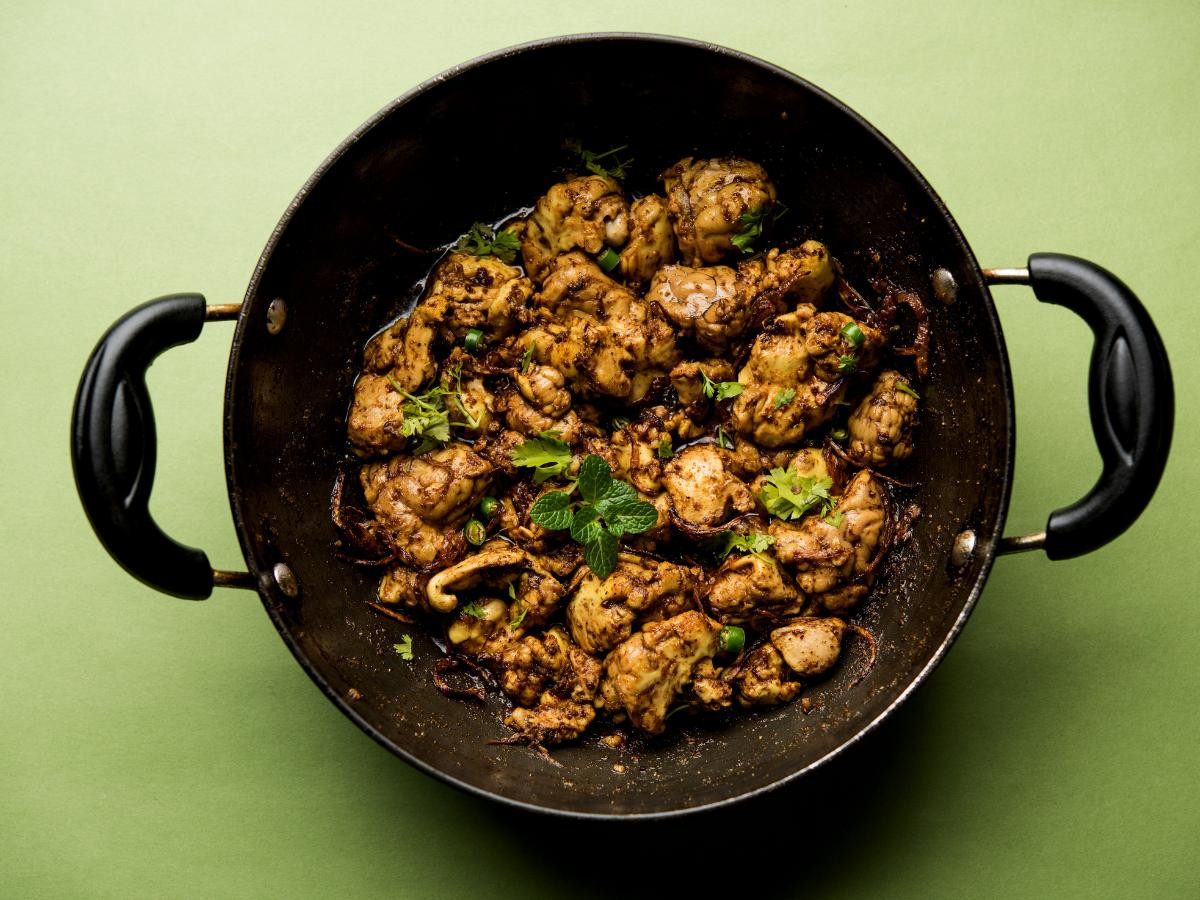
The flavor journey of goat meat is akin to savoring a symphony of tastes. Picture the richness of a slow-cooked stew meeting the earthiness of the pasture, resulting in a melody that unfolds on the palate.
The gamey essence, while present, is not overpowering, allowing the more delicate nuances to shine through. It’s a meat that beckons culinary exploration, inviting the chef and home cook alike to orchestrate a gastronomic masterpiece.
Orchestrating a Culinary Symphony:
Envision goat meat as the central instrument in a culinary symphony, where each note, texture, and flavor contributes to a harmonious masterpiece.
The richness of slow-cooked goat meat resembles the deep resonance of a cello, while the earthiness harkens to the grounded tones of a double bass.
Slow-Cooked Stew:
The slow-cooked preparation method acts as the conductor, bringing out the full range of flavors in goat meat.
The resulting taste is not just a single note; it’s a mix of savory, earthy, and gamey notes dancing in perfect cadence.
Meeting the Earthiness of the Pasture:
Picture the taste of goat meat as a meeting between the slow-cooked richness and the earthiness of the pasture.
The earthy notes, reminiscent of the pastoral setting where goats graze, add a layer of complexity that elevates the culinary experience.
Melody Unfolding on the Palate:
As you savor goat meat, it’s like listening to a melody unfold on your palate. The flavors develop gradually, revealing themselves in layers, much like the crescendo and decrescendo of musical notes in a symphony.
The taste journey is dynamic, offering a symphonic experience where each bite contributes to the overall composition.
Balancing Gamey Essence:
The gamey essence of goat meat is a distinctive instrument in the symphony, adding character without overpowering the entire composition.
It’s like a well-played solo that enhances the overall piece. The gamey undertones create a nuanced and memorable dining experience when balanced with the other flavors.
Beckoning Culinary Exploration:
Goat meat, in its symphony of tastes, beckons culinary exploration. It invites chefs and home cooks alike to don the conductor’s hat and experiment with different techniques and seasonings.
The versatile nature of goat meat allows for a creative journey, encouraging crafting a gastronomic masterpiece with each dish.
Influences of Age and Diet:

When you eat goat meat, it can be influenced by factors such as the age of the goat and its diet. Younger goats offer milder flavors, while older goats may present a more robust taste.
Goats that graze on a varied diet, including herbs and shrubs, may impart additional layers of complexity to the meat, enhancing its distinctive flavor profile.
Age as a Flavor Modifier:
The goat’s age plays a pivotal role in shaping the taste of its meat. Younger goats, known as kids, contribute milder flavors to the culinary ensemble.
The tenderness and subtlety of flavors in young goat meat offer a different yet delightful dining experience.
Mildness in Younger Goats:
With their milder flavor profile, young goats provide a canvas for gentle culinary expression on the palate.
The subtlety of taste allows for a wide range of seasoning and preparation options, making it an ideal choice for those who prefer a more delicate approach to goat meat.
Robust Flavors in Older Goats:
As goats mature, their meat develops more robust and pronounced flavors. The goat tastes become akin to a well-aged wine or a seasoned performer, where the richness and depth command attention.
These robust flavors add a layer of complexity, catering to those who appreciate a heartier and more assertive culinary experience.
Dietary Diversity as a Flavor Enhancer:
The goat’s diet serves as a conductor, orchestrating the diverse flavors present in the meat. Goats that graze on a varied diet, including herbs and shrubs, contribute additional layers of complexity.
Herbs and Shrubs Adding Nuance:
Including herbs and shrubs in a goat’s diet imparts nuanced flavors to the meat. It’s akin to the infusion of diverse musical notes that enrich the overall composition of a symphony.
These additional layers of complexity elevate the taste, offering a multidimensional experience that goes beyond the basic notes of gamey, earthy, or rich.
Enhancing the Flavor Profile:
Consider the goat’s diet as an artist’s palette, with each element contributing a unique hue to the overall flavor profile.
Herbs and shrubs, much like vibrant colors, enhance the meat’s taste, making it a dynamic and captivating culinary creation.
Preparation Methods Matter:

While the inherent taste of cooked goat meat is a captivating journey, the preparation methods wield significant influence.
Goat meat is remarkably versatile, capable of absorbing the flavors of marinades, rubs, and spices with enthusiasm.
Each method coaxes out different dimensions of the meat’s character, from slow-cooking goat meat in aromatic stews to the grill sizzle.
Versatility as a Culinary Canvas: Goat meat is a versatile culinary canvas ready to absorb and showcase diverse flavors.
Much like an artist’s canvas awaiting brushstrokes, goat meat invites chefs and home cooks to experiment with various preparation methods to unveil its full character.
Flavor Absorption Prowess: One of the remarkable qualities of goat meat lies in its ability to eagerly absorb the flavors of marinades, rubs, and spices.
It’s like a blank musical score waiting to be filled with intricate notes and harmonies. The meat’s porous nature infuses it with the aromatic and flavorful elements introduced during preparation.
Slow-Cooking Alchemy: Slow-cooking becomes an alchemical process for goat meat, transforming it into a succulent and tender masterpiece.
The prolonged cooking time allows the meat to marry with seasonings, resulting in a rich and complex flavor profile that unfolds gradually.
Grill Sizzle and Char: With its sizzle and char, the grill becomes a stage for goat meat to express a different facet of its character.
It’s like the crisp percussion beats in a musical composition, adding a layer of excitement and intensity. Grilling goat meat introduces smoky notes and a delightful char, complimenting the gamey and earthy undertones, creating a dynamic flavor interplay.
Roasting Elegance: Roasting, with its even heat distribution, adds an element of elegance to goat meat preparation.
Roasting allows the meat’s natural flavors to shine while incorporating the nuances introduced through seasonings and herbs.
Braising Magic: Braising goat meat resembles a magical crescendo in the culinary orchestra. The slow simmering in flavorful liquids transforms tougher cuts into meltingly tender bites.
The braising liquid imparts its essence and allows the meat to soak up the surrounding flavors, resulting in a harmonious and deeply infused dish.
Culinary Creativity Unleashed: The versatility of frozen goat meat opens the door to culinary creativity. It encourages chefs and home cooks to play with different techniques, from marinating and slow cooking to grilling and roasting.
Each method becomes a brushstroke on the culinary canvas, contributing to the masterpiece of goat meat prepared with artistry and imagination.
Does Goat have a Gamey Taste?
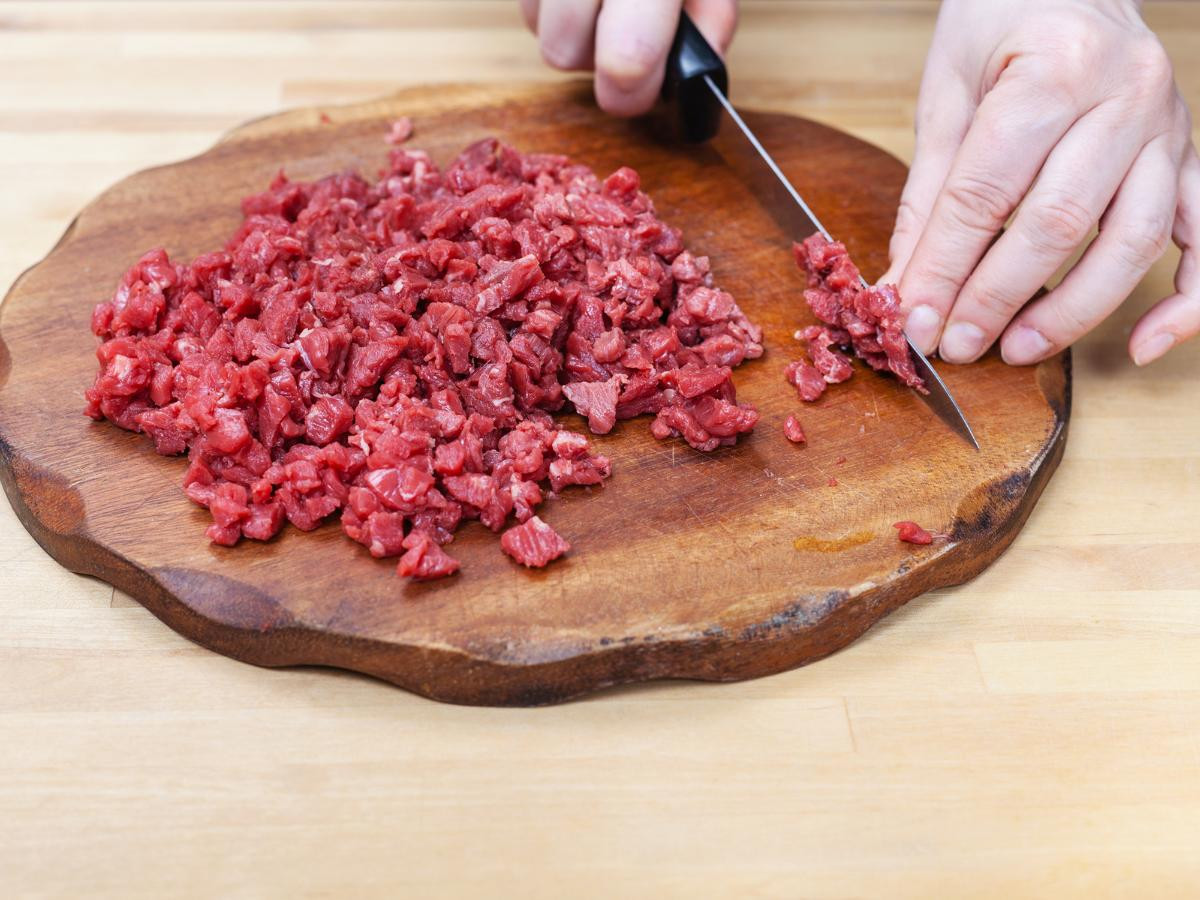
The term “gamey” characterizes flavors reminiscent of wild game, such as venison or boar. The distinct taste of goat meat is influenced by compounds and fatty acids present in the meat, which contribute to its unique and robust flavor profile.
The gamey flavor of goat meat can be attributed to factors such as the animal’s diet, age, and the presence of certain compounds like myoglobin.
Younger goats generally have milder flavors, while older goats may have a more pronounced and gamey taste. Additionally, goats that graze on various vegetation, including herbs and shrubs, may develop a more complex and earthy flavor.
It’s worth noting that the perception of gaminess can vary from person to person. Some individuals appreciate the distinct taste of goat meat, finding the gamey notes to add depth and character to dishes. Others may find it an acquired taste, especially if they are more accustomed to milder meats.
In Conclusion:
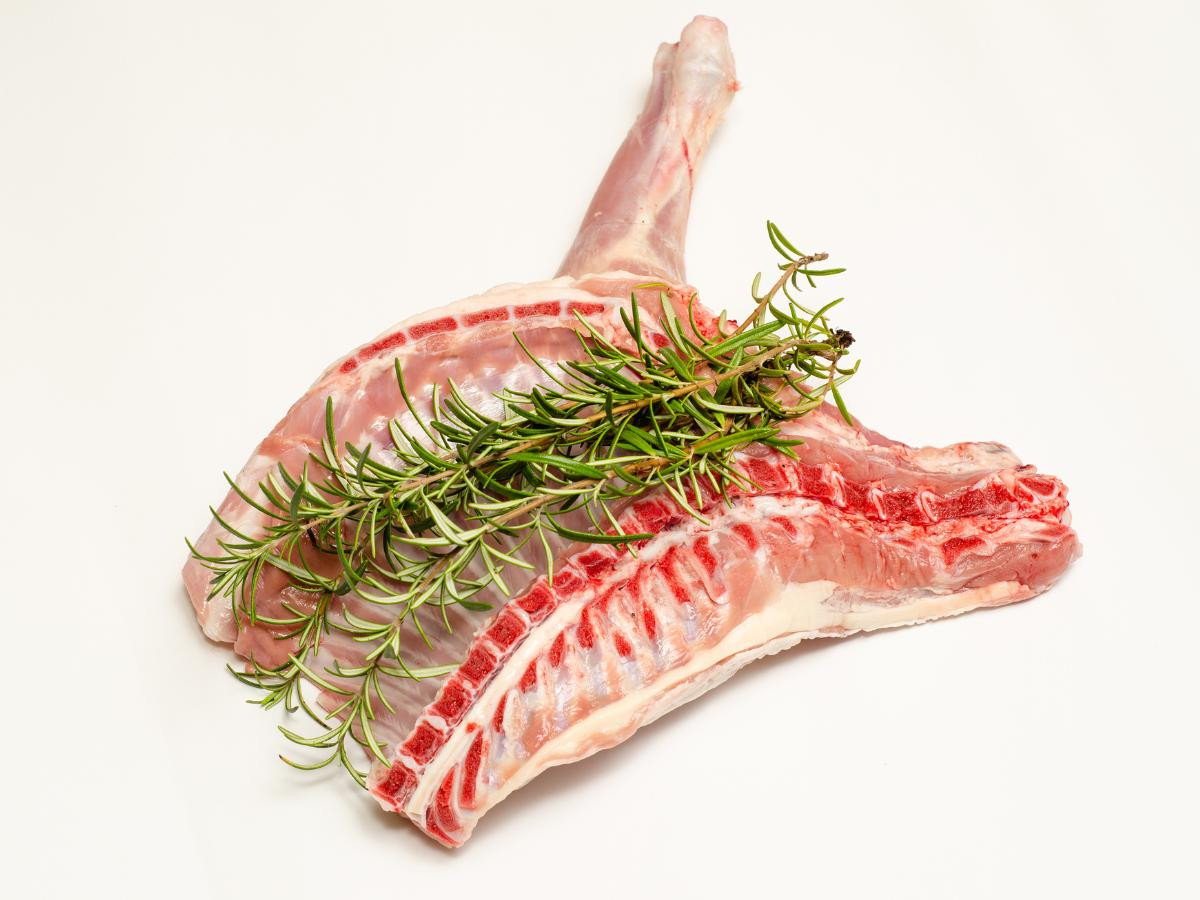
The age of the goat and what it eats quietly influence the taste. Young goats bring tender meat and a simple taste, while older ones offer a richer and more complex goat meat experience. Imagine the goat munching on different foods like herbs, adding interesting flavors.
Our ways of cooking goat meat, like skilled conductors, and when cooked properly, shape how goat meat tastes. Slow cooking creates a classic melody, grilling gives lively flavors, roasting makes a fancy dish, and braising works magic. Goat meat happily takes in these cooking styles, becoming a tasty creation that celebrates creativity and depth.
So, whether you’re a pro chef or someone who loves trying new things, goat meat is like your blank canvas. In other meats, goat meat is a bold, unique, and exciting.

